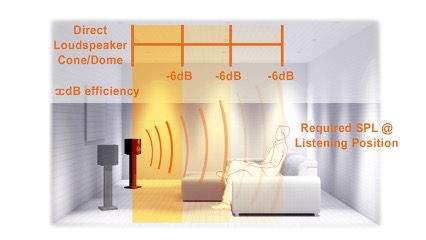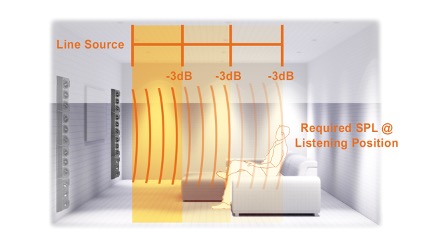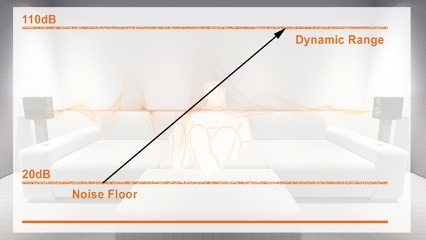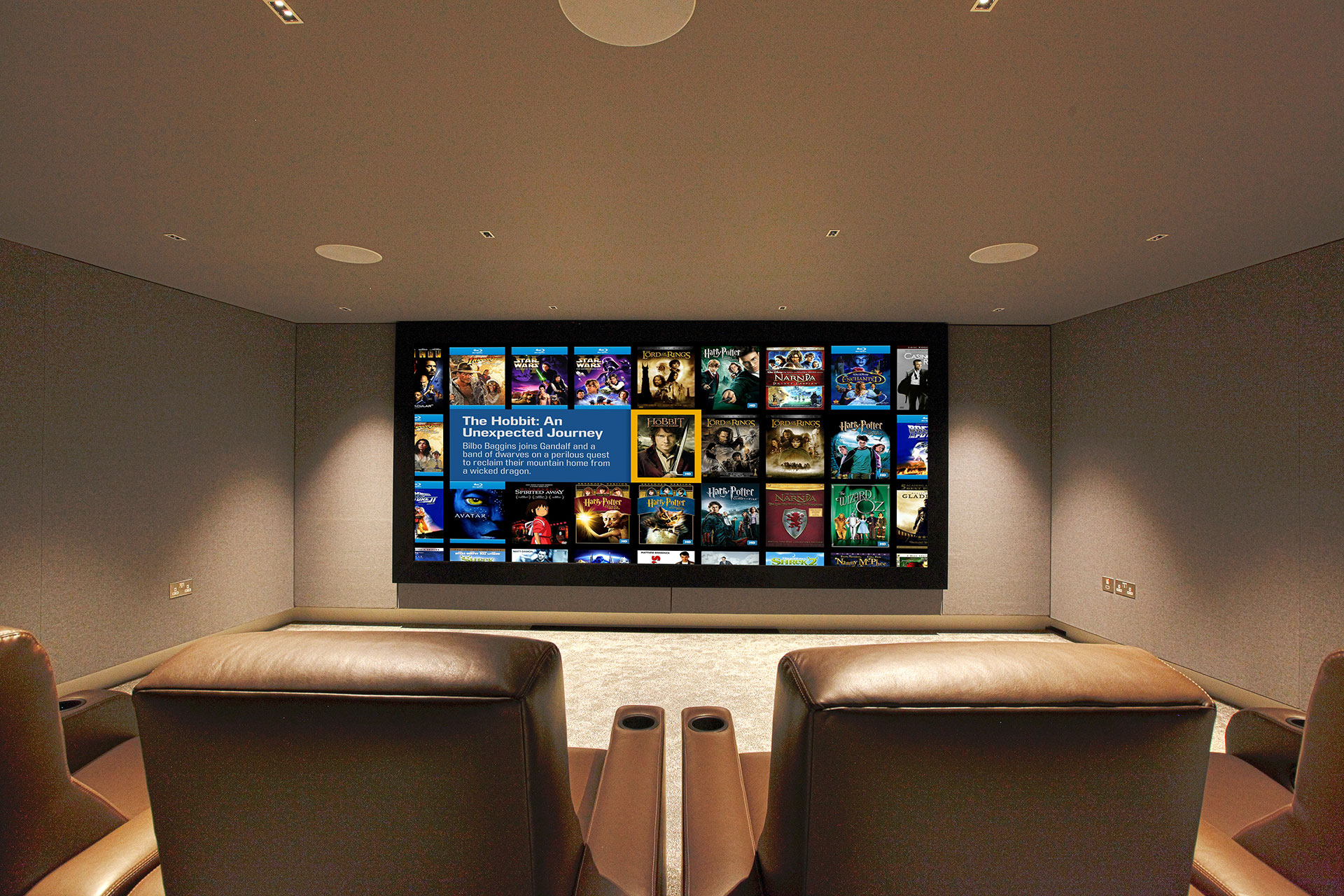When appraising a design for home cinema sound for your own home theatre or media room, it may be helpful to understand some of the elements that go into a great design. In this article, our principal designer, Guy Singleton, looks at dynamic range and noise floor.
Guy is a veteran of the industry and is known as a subject matter expert in this field. He has taught home cinema design for our governing body CEDIA across four continents. He has been involved at a technical level in the definition of industry standards and the production of white papers. Guy was also the inventor of industry-acclaimed software “The Cinema Designer” which was subsequently acquired by CEDIA. The tool is now used by our peers across the globe.
The Design for Home Cinema Sound
As professionals, when we create a design for a home cinema room, we work to meet defined performance objectives. For example, one of these might be to achieve an audio performance level of 105dB. (Some refer to this as a Reference, but it’s more complicated than that and is perhaps the subject of another post!)
To achieve this level of home cinema sound performance, you would need to consider several things.
- Noise floor
- Seating distance
- Loudspeaker efficiency (and other technical criteria)
- Amplification
- Cabling
We won’t go into all of these areas in this post, because it will become a little onerous.
Before we go any deeper into the technical considerations of audio, it is worth mentioning that different types of loudspeakers have unique and distinct ‘performance facts.’ Think of this as the speaker’s DNA. Its the ability to provide you with the correct level of performance. IMHO there aren’t many “bad” speakers out there in today’s market. I actually think it is more a case of poor home cinema design and poor loudspeaker selection for the application. Even the speakers in the handset of a telephone are the correct speaker for the right job, but they would be woefully inadequate for many other applications.
Loudspeaker Efficiency and Seating Distance
In the pursuit of a great home cinema design, and therefore brilliant home cinema sound, the efficiency of the speaker would be one characteristic that you should consider. (Of course, there are many more and this isn’t the be-all-and-end-all but it’s a good place to start.)
This data may be presented in decibels or sometimes at 1W/1M or 2.83v/1M. The more efficient a loudspeaker is the “easier” (in simple terms) it is for the amplifier to drive it.
One important point to note is, if you sit further away, you will have a reduction in SPL to the tune of 6db per doubling of distance. There are some exceptions to this logarithmic rule when you use line source speakers. This will reduce that logarithmic 6db roll-off to a 3db roll-off.
This could mean that large cinemas with multiple seating rows will deliver a much more consistent performance level from the front row to the rows behind.
The graphics below demonstrate the difference between the reduction in SPL of a direct loudspeaker vs a line source loudspeaker.


Dynamic Range
Dynamic range is one of the single most important elements of acoustic room design and creating awesome home cinema sound.
In short and simple terms, this is a matter of how loud the system can play (without distortion) and how quiet the room is.
The latter we will now refer to as ‘noise floor’.

If one can reduce the noise in the listening room to < 35db, that allows the system to deliver 105db at the listening position and therefore 70db of effective dynamic range.
Sometimes the noise floor creeps up due to outside noises such as traffic, air conditioning or sounds from adjacent rooms. This would always have a detrimental effect on your home cinema’s noise floor and thus your overall ‘dynamic range’.
You may miss quiet moments in the music or movie soundtrack entirely because your system will be battling against other external sounds. Or, as sometimes happens, you will increase the volume level to hear those parts of the soundtrack. When the energy then shifts to a much louder part of the soundtrack, you’re left reaching for the volume control to reduce the levels before your speakers or ears explode. This would not represent a good design, because the audio would be uncomfortable to experience and irritating to use.
The easiest way to understand noise floors is to draw similarities to what we commonly call ‘noise-cancelling headphones.’ By controlling the external noise, you have the advantage of a greater dynamic range. This is one of several important elements we consider when we design our rooms with exceptional home cinema sound.
Room Isolation
Keeping unwanted external sound out of a cinema room would come under the field of room isolation.
This may mean looking to isolate some of the structure and decouple some, if not all, of the inner room from the outer room. This can also include using soundproofing materials and acoustic sealant compounds. This can be challenging and expensive if done correctly. However, it is really worth looking at if you are serious about your listening room and wants the very best performance from it and the equipment you invest in.
In conclusion
We have looked at some of the elements of home cinema sound and audio design that you may wish to understand when planning your home cinema room. Hopefully, you would consider engaging an expert to guide you through some of these complex areas. But in any event, having a level of understanding can be an advantage. We hope that this brief look at some of the audio design considerations will put you in good stead for your project.
The great art of learning is to understand but little at a time.
John Locke
Imagine this have been leaders in the design and construction of some of the highest performing theatre rooms over the last two decades. We pride ourselves on our technical knowledge and experience. Our team would be very happy to design and deliver a truly stunning room with emotional home cinema sound for you.
We can because we are, Imagine This.
Further Reading
For further reading, please see our article about Home Cinema Design or here for an Immersive Home Cinema project. Here is another home cinema install project and here is our home cinema above a garage. For another technical article, how about LFE – Home Cinema Bass Explained?
(Additionally, if there is a topic you would like us to address in our news articles, please let us know using the contact form below.)

